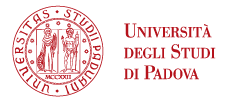
Evaluation of the role of 3-dimensional tissue models (organoids) in basic research, drug screening and molecular medicine
Colon (CRC) and rectal cancer (RC) are responsible for >50,000 deaths per year in the US (1). RC is particularly challenging, as treatment after diagnosis is more complex compared with that for CRC (2), owing to tumor location in the pelvis and close proximity to critical genitourinary organs. RCs invading the perirectal tissues or lymph nodes are treated with trimodal therapy, which consists of neoadjuvant chemoradiation (pCRT), surgical resection and 5-fluorouracil (5-FU)-based chemotherapy (2). The clinical problem associated with pCRT is that up to 40% of RC patients show poor or no response, whilst the complete pathological response is reported in 15-27% of patients (3,4). Therefore, prospective identification of patients who would achieve a complete response (4) after pCRT alone would enable more tailored treatment regimens (5) and thereby minimize potential harm from over treatment. The heterogeneity in clinical response and the morbidity associated with radical surgery highlight the need for more sophisticated modeling to predict response to pCRT.
Few cell lines have been derived from RCs, as in vitro models (6), and whether they were derived from the true anatomic rectum and/or from patients undergoing multimodal therapy reliable results are impossible to confirm. In addition, even if some studies have shown that CRC and RC differs in terms of clinical-pathological characteristics, carcinogenic pathways and therapeutic treatment (7) the preclinical development of treatments for RC has historically relied on CRC cell lines (i.e https://clinicaltrials.gov/ct2/show/NCT01282502), highlighting the need to develop RC-specific models. Furthermore, efforts to derive organoid biobanks have focused primarily on colon cancer specimens (8), with a dedicated biorepository of RC tissue or organoids remaining an unmet need in the field.
Nowadays, there are no in vitro models able to mimic the synergistic effect of the patient-specific structural environment (cancer-associated extracellular matrix [ECM]), cancer cell and immune- cell in RC allowing a real-time ability to predict the response to pCRT and reveal novel molecular mechanism of resistance to pCRT (6). In fact, given the large variety in mechanisms of resistance to therapy (12) by cancer cells, it is challenging to predict whether a patient will be sensitive to pCRT, what mechanism is likely to underlie resistance, and what alternative treatment could potentially overcome resistance.
We mostly focus on:
- Develop a patient-derived 3D model of RC by using the patient-derived ECM, as bioactive scaffold, repopulated with the patient-derived organoids (PDOs) and patient-specific immune cells purified by PBMC blood sub-fraction. This 3D Integrated in vitro Model (3DIM) will provide a useful in vitro approach for producing physiologically relevant models of RC.
- A new conceptual and technological approach for pCRT prediction might improve the prognosis of RC patients. The driving hypothesis is that our 3DIM of RC will allow us to: a) To identify the role of ECM, in terms of biochemical and biophysical components, in the modulation response to pCRT; b) To develop an in vitro model which simultaneously consider the role of structural (ECM) and immune non-tumoral components of tumor microenvironment in the response to radio-chemotherapy; c) To develop a 3D culture model for the vitro prediction of RC patient response to pCRT.
Publications:
Transl Res. 2022 Sep 10:S1931-5244(22)00202-X. doi: 10.1016/j.trsl.2022.08.015.
- Coletta S; Tumor Cells and the Extracellular Matrix Dictate the Pro-Tumoral Profile of Macrophages in CRC.
Cancers. 2021, 13(20), 5199. doi: 10.3390/cancers13205199
- Gentilin E; Decellularized normal and cancer tissues as tools for cancer research.
Cancer Gene Therapy. 2021, doi: 10.1038/s41417-021-00398-2
- Sensi F, Recellularized colorectal cancer patient-derived scaffolds as in vitro pre-clinical 3D model for drug screening. Cancers 2020 Mar; 12(3): 681. doi: 10.3390/cancers12030681
- Sensi F; Preclinical three‐dimensional colorectal cancer model: The next generation of in vitro drug efficacy evaluation.
Journal of Cellular Physiology. 2018 ;234(1):181-191. doi: 10.1002/jcp.26812.
- Crotti S; Extracellular Matrix and Colorectal Cancer: How Surrounding Microenvironment Affects Cancer Cell Behavior?.
J Cell Physiology. 2017; 232(5):967-975. doi: 10.1002/jcp.2565
- Piccoli M; Decellularized colorectal cancer matrix as bioactive microenvironment for in vitro 3D cancer research.
Journal of Cellular Physiology. 2018 Aug;233(8):5937-5948.doi: 10.1002/jcp.26403.
People involved
Prof. Salvatore Pucciarelli, Prof.ssa Gaya Spolverato, Dr. Marco Agostini.
Group Member
Prof. Salvatore Pucciarelli, MD
Prof.ssa Gaya Spolverato, MD
Dr. Marco Agostini, PhD
Dr. Marco Scarpa, MD, PhD
Dr. Edoardo D’Angelo, PhD
Dr.ssa Francesca Sensi, PhD
Dr. Andrea Biccari, PhD





